#lamartine valley
Text
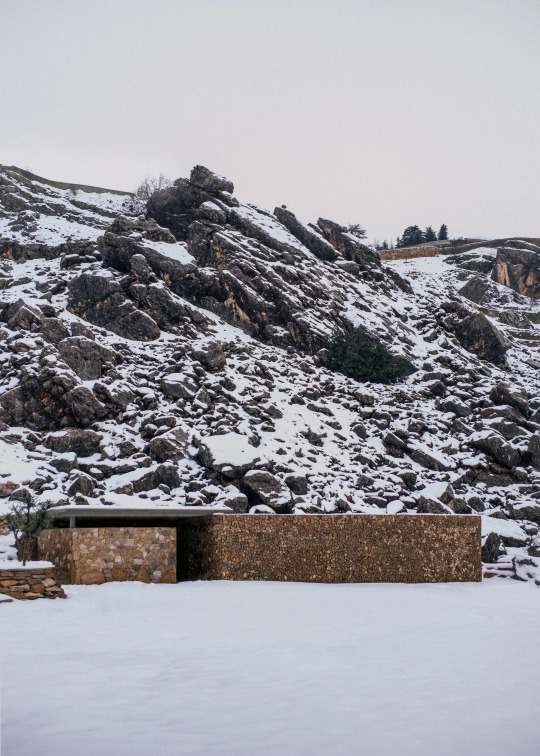

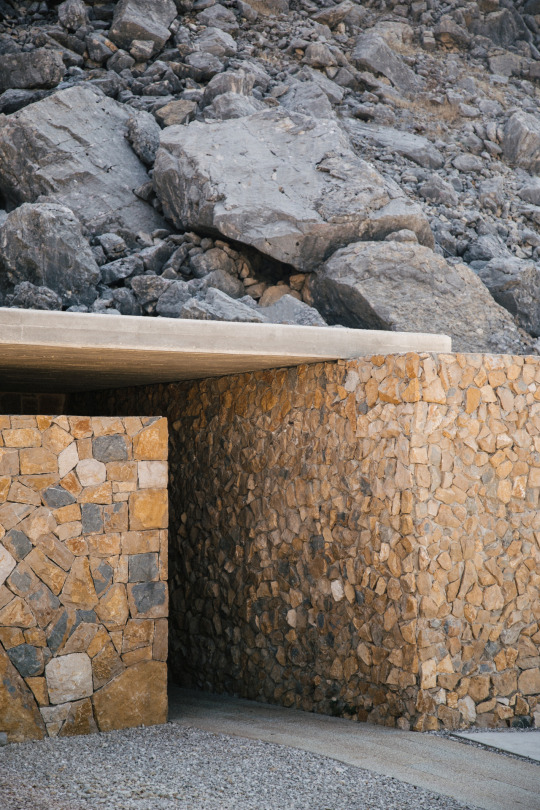

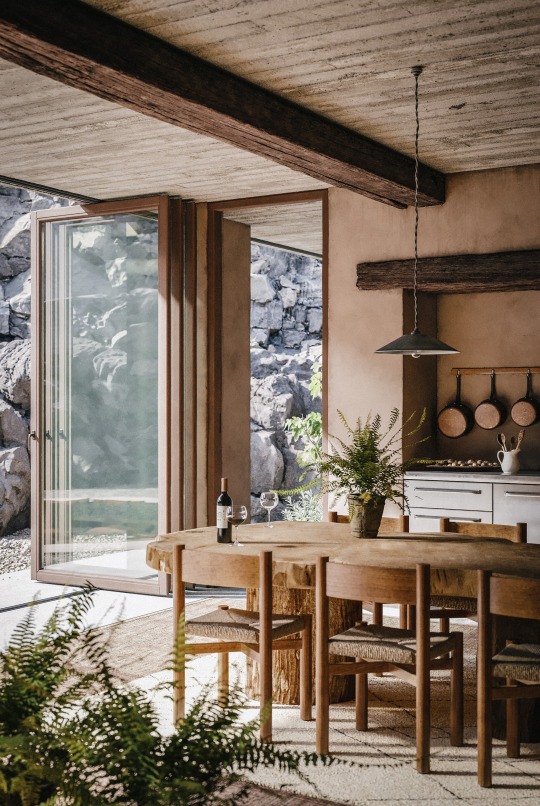


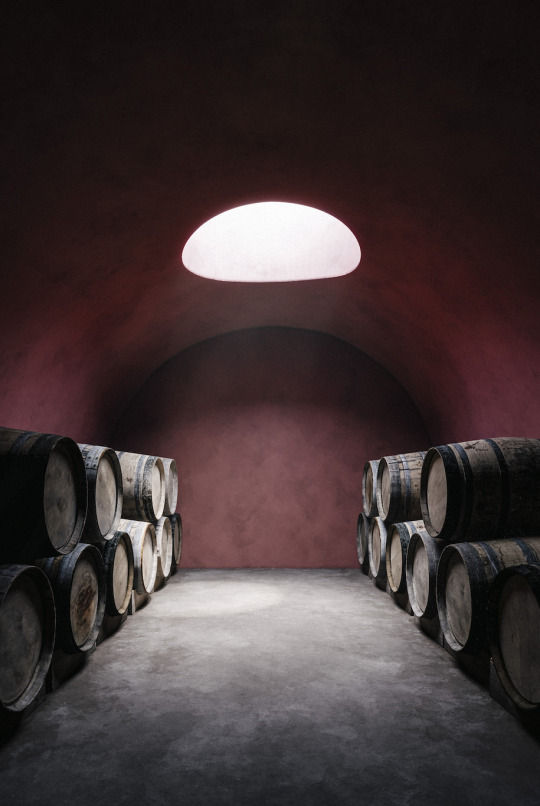
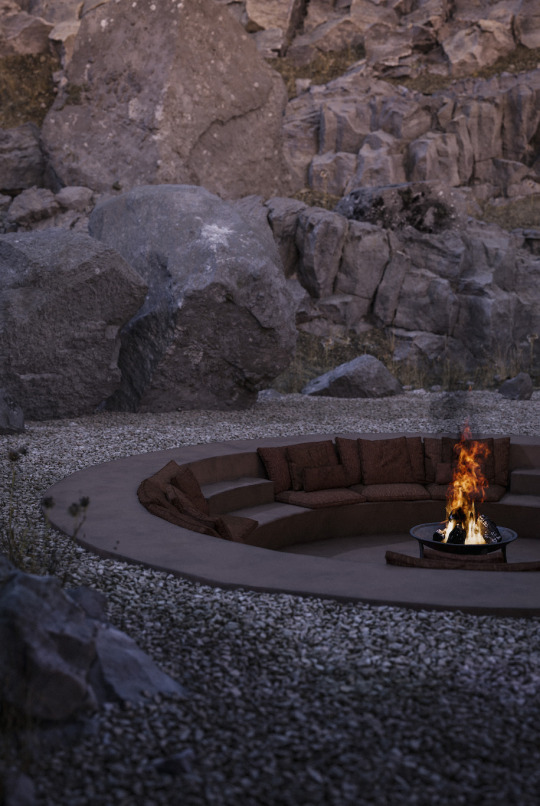
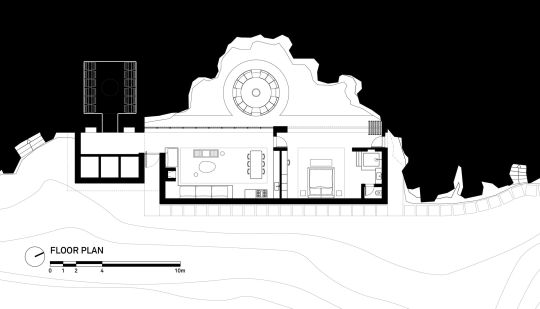
Cana Guesthouse,Bhamdoun, Lebanon,
Carl Gerges Architects
#art#design#architecture#minimal#interior design#interiors#retreat#guesthouse#cana#bhamdoun#aley#lamartine valley#carl gerges#rustic#vineyard#lebanon
338 notes
·
View notes
Photo
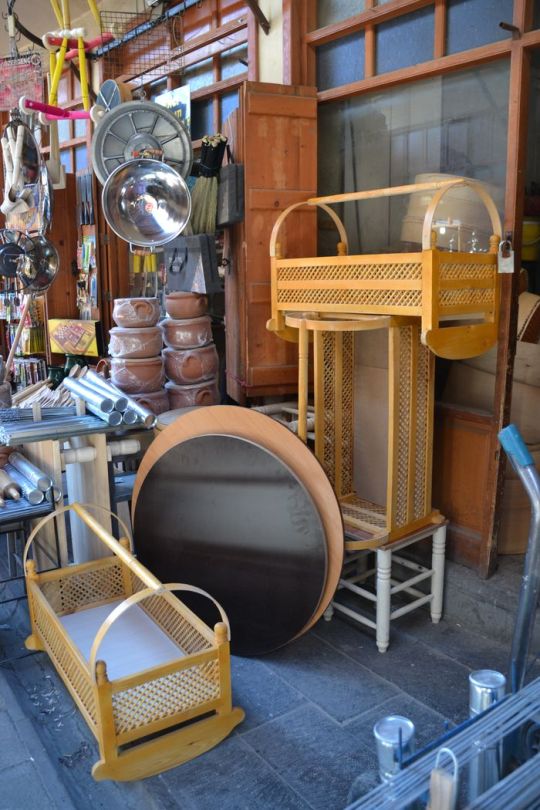
The paint may be overdone
The paint may be overdone; the colours are not always harmonious; the new glass is not equal to the old. But its restoration by the most learned of modern antiquarians enables the unlearned to judge the effect of Gothic architecture in its glory, and to understand the pregnant remark of Mr. Fergusson that Gothic architecture might well be named the painted-glass style of building. To the historian, this Chapel, the domestic oratory of St. Louis, the purest hero of the Middle Ages, the church of the palace of the French kings in their noblest era, the entrancing masterpiece of pointed architecture, must remain as one of the typical buildings in the world.
The mass of buildings, of which the Sainte Chapelle is part, exactly answers to our palace of Westminster; and our palace alone can compare with it as a relic of the Feudal monarchy. The Conciergerie prison, the adjacent hall, and the towers which we see along the Quai de l’Horloge, cor-respond with the remains of the old palace of Westminster, which was finally destroyed when the Houses of Parliament were built. The Sainte Chapelle answers to St. Stephen’s, of which the exquisite crypt alone survived the fire of 1834. Westminster Hall answers to the Salle des Pas Perdus, which took the place of the great Hall of St. Louis private tours istanbul. The Palais de Justice answers to the Law Courts of Westminster which were in use till removed in 1882.
Clock Tower
The Tour de V Horloge exactly repeats our Clock Tower. Now the French palace is in foundation far more ancient than the English; more of its ancient parts remain; and its historical record is longer, and almost more crowded with incident, than our own. The French palace is the successor of the Municipal palace of Roman Lutetia; and traces of this building have been preserved. It was certainly the Parisian palace of Clovis and his dynasty, of Charlemagne and his dynasty, and it was the capital seat of the Counts of Paris, when they became kings of France. It only ceased to be a royal residence in the age of Francis 1. and Henri 11. It was thus for a thousand years the home of the monarchs of the Seine valley. It is significant of French history that, whereas in England Parliament has finally ousted both Monarchy and Justice from the Palace of Westminster and installed itself in the royal abode and even taken its name, in Paris it is Justice and Police which have appropriated the Palace in the island Citt and have long ago ousted both Parliament and Monarchy.
In England we have nothing of the old palace left but the crypt of St. Stephen’s, some cloisters, a few chambers, and the great Hall. In France they have rebuilt their old Hall; but they have their Chapel almost entire. And whereas in Westminster we have the old palace now rebuilt, and absorbed in Barry’s modern perpendicular, in Paris they have still the shell of the old towers and gateway, and some fine work of the age of St. Louis within the Conciergerie building.
There is some noble masonry in what is called the Kitchen of St. Louis, evidently the substructure of his palace, and many other parts of his work within the precincts of the prison. Few prisons have a record more stirring. Here, during the Revolution, all the chief prisoners passed their last hours. We may still see the cell where Marie Antoinette uttered her last prayers, where Robespierre lay in agony, and Danton and Vergniaud thundered out their latest perorations,—and they show you, too, the traditional scene of the mythical last supper of the Girondins, which figures so melodramatically in the famous romance of Lamartine.
0 notes
Photo
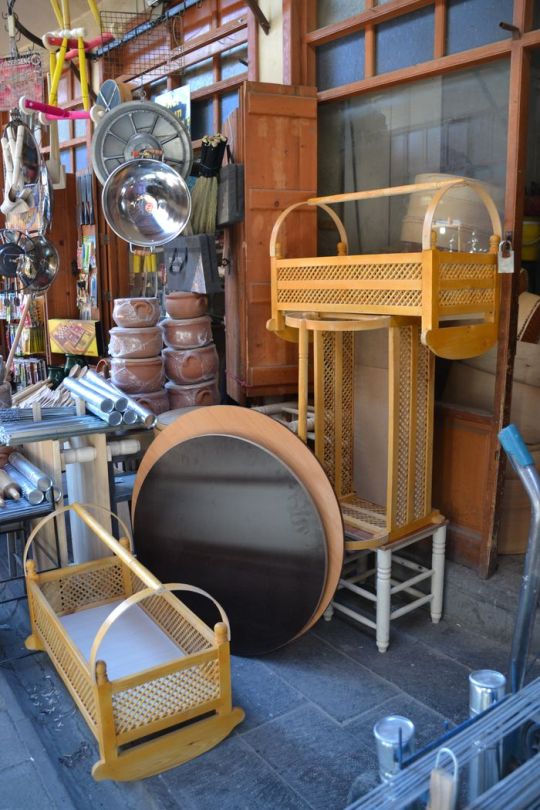
The paint may be overdone
The paint may be overdone; the colours are not always harmonious; the new glass is not equal to the old. But its restoration by the most learned of modern antiquarians enables the unlearned to judge the effect of Gothic architecture in its glory, and to understand the pregnant remark of Mr. Fergusson that Gothic architecture might well be named the painted-glass style of building. To the historian, this Chapel, the domestic oratory of St. Louis, the purest hero of the Middle Ages, the church of the palace of the French kings in their noblest era, the entrancing masterpiece of pointed architecture, must remain as one of the typical buildings in the world.
The mass of buildings, of which the Sainte Chapelle is part, exactly answers to our palace of Westminster; and our palace alone can compare with it as a relic of the Feudal monarchy. The Conciergerie prison, the adjacent hall, and the towers which we see along the Quai de l’Horloge, cor-respond with the remains of the old palace of Westminster, which was finally destroyed when the Houses of Parliament were built. The Sainte Chapelle answers to St. Stephen’s, of which the exquisite crypt alone survived the fire of 1834. Westminster Hall answers to the Salle des Pas Perdus, which took the place of the great Hall of St. Louis private tours istanbul. The Palais de Justice answers to the Law Courts of Westminster which were in use till removed in 1882.
Clock Tower
The Tour de V Horloge exactly repeats our Clock Tower. Now the French palace is in foundation far more ancient than the English; more of its ancient parts remain; and its historical record is longer, and almost more crowded with incident, than our own. The French palace is the successor of the Municipal palace of Roman Lutetia; and traces of this building have been preserved. It was certainly the Parisian palace of Clovis and his dynasty, of Charlemagne and his dynasty, and it was the capital seat of the Counts of Paris, when they became kings of France. It only ceased to be a royal residence in the age of Francis 1. and Henri 11. It was thus for a thousand years the home of the monarchs of the Seine valley. It is significant of French history that, whereas in England Parliament has finally ousted both Monarchy and Justice from the Palace of Westminster and installed itself in the royal abode and even taken its name, in Paris it is Justice and Police which have appropriated the Palace in the island Citt and have long ago ousted both Parliament and Monarchy.
In England we have nothing of the old palace left but the crypt of St. Stephen’s, some cloisters, a few chambers, and the great Hall. In France they have rebuilt their old Hall; but they have their Chapel almost entire. And whereas in Westminster we have the old palace now rebuilt, and absorbed in Barry’s modern perpendicular, in Paris they have still the shell of the old towers and gateway, and some fine work of the age of St. Louis within the Conciergerie building.
There is some noble masonry in what is called the Kitchen of St. Louis, evidently the substructure of his palace, and many other parts of his work within the precincts of the prison. Few prisons have a record more stirring. Here, during the Revolution, all the chief prisoners passed their last hours. We may still see the cell where Marie Antoinette uttered her last prayers, where Robespierre lay in agony, and Danton and Vergniaud thundered out their latest perorations,—and they show you, too, the traditional scene of the mythical last supper of the Girondins, which figures so melodramatically in the famous romance of Lamartine.
0 notes
Photo

The paint may be overdone
The paint may be overdone; the colours are not always harmonious; the new glass is not equal to the old. But its restoration by the most learned of modern antiquarians enables the unlearned to judge the effect of Gothic architecture in its glory, and to understand the pregnant remark of Mr. Fergusson that Gothic architecture might well be named the painted-glass style of building. To the historian, this Chapel, the domestic oratory of St. Louis, the purest hero of the Middle Ages, the church of the palace of the French kings in their noblest era, the entrancing masterpiece of pointed architecture, must remain as one of the typical buildings in the world.
The mass of buildings, of which the Sainte Chapelle is part, exactly answers to our palace of Westminster; and our palace alone can compare with it as a relic of the Feudal monarchy. The Conciergerie prison, the adjacent hall, and the towers which we see along the Quai de l’Horloge, cor-respond with the remains of the old palace of Westminster, which was finally destroyed when the Houses of Parliament were built. The Sainte Chapelle answers to St. Stephen’s, of which the exquisite crypt alone survived the fire of 1834. Westminster Hall answers to the Salle des Pas Perdus, which took the place of the great Hall of St. Louis private tours istanbul. The Palais de Justice answers to the Law Courts of Westminster which were in use till removed in 1882.
Clock Tower
The Tour de V Horloge exactly repeats our Clock Tower. Now the French palace is in foundation far more ancient than the English; more of its ancient parts remain; and its historical record is longer, and almost more crowded with incident, than our own. The French palace is the successor of the Municipal palace of Roman Lutetia; and traces of this building have been preserved. It was certainly the Parisian palace of Clovis and his dynasty, of Charlemagne and his dynasty, and it was the capital seat of the Counts of Paris, when they became kings of France. It only ceased to be a royal residence in the age of Francis 1. and Henri 11. It was thus for a thousand years the home of the monarchs of the Seine valley. It is significant of French history that, whereas in England Parliament has finally ousted both Monarchy and Justice from the Palace of Westminster and installed itself in the royal abode and even taken its name, in Paris it is Justice and Police which have appropriated the Palace in the island Citt and have long ago ousted both Parliament and Monarchy.
In England we have nothing of the old palace left but the crypt of St. Stephen’s, some cloisters, a few chambers, and the great Hall. In France they have rebuilt their old Hall; but they have their Chapel almost entire. And whereas in Westminster we have the old palace now rebuilt, and absorbed in Barry’s modern perpendicular, in Paris they have still the shell of the old towers and gateway, and some fine work of the age of St. Louis within the Conciergerie building.
There is some noble masonry in what is called the Kitchen of St. Louis, evidently the substructure of his palace, and many other parts of his work within the precincts of the prison. Few prisons have a record more stirring. Here, during the Revolution, all the chief prisoners passed their last hours. We may still see the cell where Marie Antoinette uttered her last prayers, where Robespierre lay in agony, and Danton and Vergniaud thundered out their latest perorations,—and they show you, too, the traditional scene of the mythical last supper of the Girondins, which figures so melodramatically in the famous romance of Lamartine.
0 notes
Photo

The paint may be overdone
The paint may be overdone; the colours are not always harmonious; the new glass is not equal to the old. But its restoration by the most learned of modern antiquarians enables the unlearned to judge the effect of Gothic architecture in its glory, and to understand the pregnant remark of Mr. Fergusson that Gothic architecture might well be named the painted-glass style of building. To the historian, this Chapel, the domestic oratory of St. Louis, the purest hero of the Middle Ages, the church of the palace of the French kings in their noblest era, the entrancing masterpiece of pointed architecture, must remain as one of the typical buildings in the world.
The mass of buildings, of which the Sainte Chapelle is part, exactly answers to our palace of Westminster; and our palace alone can compare with it as a relic of the Feudal monarchy. The Conciergerie prison, the adjacent hall, and the towers which we see along the Quai de l’Horloge, cor-respond with the remains of the old palace of Westminster, which was finally destroyed when the Houses of Parliament were built. The Sainte Chapelle answers to St. Stephen’s, of which the exquisite crypt alone survived the fire of 1834. Westminster Hall answers to the Salle des Pas Perdus, which took the place of the great Hall of St. Louis private tours istanbul. The Palais de Justice answers to the Law Courts of Westminster which were in use till removed in 1882.
Clock Tower
The Tour de V Horloge exactly repeats our Clock Tower. Now the French palace is in foundation far more ancient than the English; more of its ancient parts remain; and its historical record is longer, and almost more crowded with incident, than our own. The French palace is the successor of the Municipal palace of Roman Lutetia; and traces of this building have been preserved. It was certainly the Parisian palace of Clovis and his dynasty, of Charlemagne and his dynasty, and it was the capital seat of the Counts of Paris, when they became kings of France. It only ceased to be a royal residence in the age of Francis 1. and Henri 11. It was thus for a thousand years the home of the monarchs of the Seine valley. It is significant of French history that, whereas in England Parliament has finally ousted both Monarchy and Justice from the Palace of Westminster and installed itself in the royal abode and even taken its name, in Paris it is Justice and Police which have appropriated the Palace in the island Citt and have long ago ousted both Parliament and Monarchy.
In England we have nothing of the old palace left but the crypt of St. Stephen’s, some cloisters, a few chambers, and the great Hall. In France they have rebuilt their old Hall; but they have their Chapel almost entire. And whereas in Westminster we have the old palace now rebuilt, and absorbed in Barry’s modern perpendicular, in Paris they have still the shell of the old towers and gateway, and some fine work of the age of St. Louis within the Conciergerie building.
There is some noble masonry in what is called the Kitchen of St. Louis, evidently the substructure of his palace, and many other parts of his work within the precincts of the prison. Few prisons have a record more stirring. Here, during the Revolution, all the chief prisoners passed their last hours. We may still see the cell where Marie Antoinette uttered her last prayers, where Robespierre lay in agony, and Danton and Vergniaud thundered out their latest perorations,—and they show you, too, the traditional scene of the mythical last supper of the Girondins, which figures so melodramatically in the famous romance of Lamartine.
0 notes
Photo
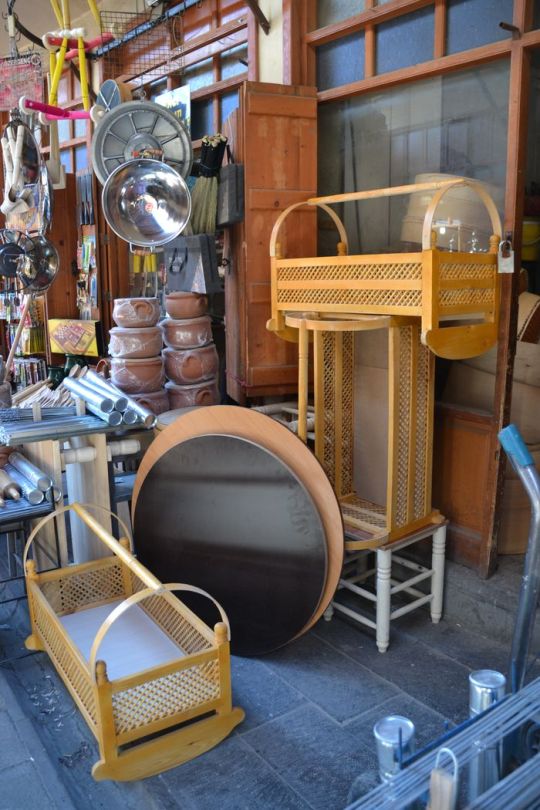
The paint may be overdone
The paint may be overdone; the colours are not always harmonious; the new glass is not equal to the old. But its restoration by the most learned of modern antiquarians enables the unlearned to judge the effect of Gothic architecture in its glory, and to understand the pregnant remark of Mr. Fergusson that Gothic architecture might well be named the painted-glass style of building. To the historian, this Chapel, the domestic oratory of St. Louis, the purest hero of the Middle Ages, the church of the palace of the French kings in their noblest era, the entrancing masterpiece of pointed architecture, must remain as one of the typical buildings in the world.
The mass of buildings, of which the Sainte Chapelle is part, exactly answers to our palace of Westminster; and our palace alone can compare with it as a relic of the Feudal monarchy. The Conciergerie prison, the adjacent hall, and the towers which we see along the Quai de l’Horloge, cor-respond with the remains of the old palace of Westminster, which was finally destroyed when the Houses of Parliament were built. The Sainte Chapelle answers to St. Stephen’s, of which the exquisite crypt alone survived the fire of 1834. Westminster Hall answers to the Salle des Pas Perdus, which took the place of the great Hall of St. Louis private tours istanbul. The Palais de Justice answers to the Law Courts of Westminster which were in use till removed in 1882.
Clock Tower
The Tour de V Horloge exactly repeats our Clock Tower. Now the French palace is in foundation far more ancient than the English; more of its ancient parts remain; and its historical record is longer, and almost more crowded with incident, than our own. The French palace is the successor of the Municipal palace of Roman Lutetia; and traces of this building have been preserved. It was certainly the Parisian palace of Clovis and his dynasty, of Charlemagne and his dynasty, and it was the capital seat of the Counts of Paris, when they became kings of France. It only ceased to be a royal residence in the age of Francis 1. and Henri 11. It was thus for a thousand years the home of the monarchs of the Seine valley. It is significant of French history that, whereas in England Parliament has finally ousted both Monarchy and Justice from the Palace of Westminster and installed itself in the royal abode and even taken its name, in Paris it is Justice and Police which have appropriated the Palace in the island Citt and have long ago ousted both Parliament and Monarchy.
In England we have nothing of the old palace left but the crypt of St. Stephen’s, some cloisters, a few chambers, and the great Hall. In France they have rebuilt their old Hall; but they have their Chapel almost entire. And whereas in Westminster we have the old palace now rebuilt, and absorbed in Barry’s modern perpendicular, in Paris they have still the shell of the old towers and gateway, and some fine work of the age of St. Louis within the Conciergerie building.
There is some noble masonry in what is called the Kitchen of St. Louis, evidently the substructure of his palace, and many other parts of his work within the precincts of the prison. Few prisons have a record more stirring. Here, during the Revolution, all the chief prisoners passed their last hours. We may still see the cell where Marie Antoinette uttered her last prayers, where Robespierre lay in agony, and Danton and Vergniaud thundered out their latest perorations,—and they show you, too, the traditional scene of the mythical last supper of the Girondins, which figures so melodramatically in the famous romance of Lamartine.
0 notes
Photo

The paint may be overdone
The paint may be overdone; the colours are not always harmonious; the new glass is not equal to the old. But its restoration by the most learned of modern antiquarians enables the unlearned to judge the effect of Gothic architecture in its glory, and to understand the pregnant remark of Mr. Fergusson that Gothic architecture might well be named the painted-glass style of building. To the historian, this Chapel, the domestic oratory of St. Louis, the purest hero of the Middle Ages, the church of the palace of the French kings in their noblest era, the entrancing masterpiece of pointed architecture, must remain as one of the typical buildings in the world.
The mass of buildings, of which the Sainte Chapelle is part, exactly answers to our palace of Westminster; and our palace alone can compare with it as a relic of the Feudal monarchy. The Conciergerie prison, the adjacent hall, and the towers which we see along the Quai de l’Horloge, cor-respond with the remains of the old palace of Westminster, which was finally destroyed when the Houses of Parliament were built. The Sainte Chapelle answers to St. Stephen’s, of which the exquisite crypt alone survived the fire of 1834. Westminster Hall answers to the Salle des Pas Perdus, which took the place of the great Hall of St. Louis private tours istanbul. The Palais de Justice answers to the Law Courts of Westminster which were in use till removed in 1882.
Clock Tower
The Tour de V Horloge exactly repeats our Clock Tower. Now the French palace is in foundation far more ancient than the English; more of its ancient parts remain; and its historical record is longer, and almost more crowded with incident, than our own. The French palace is the successor of the Municipal palace of Roman Lutetia; and traces of this building have been preserved. It was certainly the Parisian palace of Clovis and his dynasty, of Charlemagne and his dynasty, and it was the capital seat of the Counts of Paris, when they became kings of France. It only ceased to be a royal residence in the age of Francis 1. and Henri 11. It was thus for a thousand years the home of the monarchs of the Seine valley. It is significant of French history that, whereas in England Parliament has finally ousted both Monarchy and Justice from the Palace of Westminster and installed itself in the royal abode and even taken its name, in Paris it is Justice and Police which have appropriated the Palace in the island Citt and have long ago ousted both Parliament and Monarchy.
In England we have nothing of the old palace left but the crypt of St. Stephen’s, some cloisters, a few chambers, and the great Hall. In France they have rebuilt their old Hall; but they have their Chapel almost entire. And whereas in Westminster we have the old palace now rebuilt, and absorbed in Barry’s modern perpendicular, in Paris they have still the shell of the old towers and gateway, and some fine work of the age of St. Louis within the Conciergerie building.
There is some noble masonry in what is called the Kitchen of St. Louis, evidently the substructure of his palace, and many other parts of his work within the precincts of the prison. Few prisons have a record more stirring. Here, during the Revolution, all the chief prisoners passed their last hours. We may still see the cell where Marie Antoinette uttered her last prayers, where Robespierre lay in agony, and Danton and Vergniaud thundered out their latest perorations,—and they show you, too, the traditional scene of the mythical last supper of the Girondins, which figures so melodramatically in the famous romance of Lamartine.
0 notes
Text
New Post has been published on
The paint may be overdone
The paint may be overdone; the colours are not always harmonious; the new glass is not equal to the old. But its restoration by the most learned of modern antiquarians enables the unlearned to judge the effect of Gothic architecture in its glory, and to understand the pregnant remark of Mr. Fergusson that Gothic architecture might well be named the painted-glass style of building. To the historian, this Chapel, the domestic oratory of St. Louis, the purest hero of the Middle Ages, the church of the palace of the French kings in their noblest era, the entrancing masterpiece of pointed architecture, must remain as one of the typical buildings in the world.
The mass of buildings, of which the Sainte Chapelle is part, exactly answers to our palace of Westminster; and our palace alone can compare with it as a relic of the Feudal monarchy. The Conciergerie prison, the adjacent hall, and the towers which we see along the Quai de l’Horloge, cor-respond with the remains of the old palace of Westminster, which was finally destroyed when the Houses of Parliament were built. The Sainte Chapelle answers to St. Stephen’s, of which the exquisite crypt alone survived the fire of 1834. Westminster Hall answers to the Salle des Pas Perdus, which took the place of the great Hall of St. Louis private tours istanbul. The Palais de Justice answers to the Law Courts of Westminster which were in use till removed in 1882.
Clock Tower
The Tour de V Horloge exactly repeats our Clock Tower. Now the French palace is in foundation far more ancient than the English; more of its ancient parts remain; and its historical record is longer, and almost more crowded with incident, than our own. The French palace is the successor of the Municipal palace of Roman Lutetia; and traces of this building have been preserved. It was certainly the Parisian palace of Clovis and his dynasty, of Charlemagne and his dynasty, and it was the capital seat of the Counts of Paris, when they became kings of France. It only ceased to be a royal residence in the age of Francis 1. and Henri 11. It was thus for a thousand years the home of the monarchs of the Seine valley. It is significant of French history that, whereas in England Parliament has finally ousted both Monarchy and Justice from the Palace of Westminster and installed itself in the royal abode and even taken its name, in Paris it is Justice and Police which have appropriated the Palace in the island Citt and have long ago ousted both Parliament and Monarchy.
In England we have nothing of the old palace left but the crypt of St. Stephen’s, some cloisters, a few chambers, and the great Hall. In France they have rebuilt their old Hall; but they have their Chapel almost entire. And whereas in Westminster we have the old palace now rebuilt, and absorbed in Barry’s modern perpendicular, in Paris they have still the shell of the old towers and gateway, and some fine work of the age of St. Louis within the Conciergerie building.
There is some noble masonry in what is called the Kitchen of St. Louis, evidently the substructure of his palace, and many other parts of his work within the precincts of the prison. Few prisons have a record more stirring. Here, during the Revolution, all the chief prisoners passed their last hours. We may still see the cell where Marie Antoinette uttered her last prayers, where Robespierre lay in agony, and Danton and Vergniaud thundered out their latest perorations,—and they show you, too, the traditional scene of the mythical last supper of the Girondins, which figures so melodramatically in the famous romance of Lamartine.
0 notes
Photo

The paint may be overdone
The paint may be overdone; the colours are not always harmonious; the new glass is not equal to the old. But its restoration by the most learned of modern antiquarians enables the unlearned to judge the effect of Gothic architecture in its glory, and to understand the pregnant remark of Mr. Fergusson that Gothic architecture might well be named the painted-glass style of building. To the historian, this Chapel, the domestic oratory of St. Louis, the purest hero of the Middle Ages, the church of the palace of the French kings in their noblest era, the entrancing masterpiece of pointed architecture, must remain as one of the typical buildings in the world.
The mass of buildings, of which the Sainte Chapelle is part, exactly answers to our palace of Westminster; and our palace alone can compare with it as a relic of the Feudal monarchy. The Conciergerie prison, the adjacent hall, and the towers which we see along the Quai de l’Horloge, cor-respond with the remains of the old palace of Westminster, which was finally destroyed when the Houses of Parliament were built. The Sainte Chapelle answers to St. Stephen’s, of which the exquisite crypt alone survived the fire of 1834. Westminster Hall answers to the Salle des Pas Perdus, which took the place of the great Hall of St. Louis private tours istanbul. The Palais de Justice answers to the Law Courts of Westminster which were in use till removed in 1882.
Clock Tower
The Tour de V Horloge exactly repeats our Clock Tower. Now the French palace is in foundation far more ancient than the English; more of its ancient parts remain; and its historical record is longer, and almost more crowded with incident, than our own. The French palace is the successor of the Municipal palace of Roman Lutetia; and traces of this building have been preserved. It was certainly the Parisian palace of Clovis and his dynasty, of Charlemagne and his dynasty, and it was the capital seat of the Counts of Paris, when they became kings of France. It only ceased to be a royal residence in the age of Francis 1. and Henri 11. It was thus for a thousand years the home of the monarchs of the Seine valley. It is significant of French history that, whereas in England Parliament has finally ousted both Monarchy and Justice from the Palace of Westminster and installed itself in the royal abode and even taken its name, in Paris it is Justice and Police which have appropriated the Palace in the island Citt and have long ago ousted both Parliament and Monarchy.
In England we have nothing of the old palace left but the crypt of St. Stephen’s, some cloisters, a few chambers, and the great Hall. In France they have rebuilt their old Hall; but they have their Chapel almost entire. And whereas in Westminster we have the old palace now rebuilt, and absorbed in Barry’s modern perpendicular, in Paris they have still the shell of the old towers and gateway, and some fine work of the age of St. Louis within the Conciergerie building.
There is some noble masonry in what is called the Kitchen of St. Louis, evidently the substructure of his palace, and many other parts of his work within the precincts of the prison. Few prisons have a record more stirring. Here, during the Revolution, all the chief prisoners passed their last hours. We may still see the cell where Marie Antoinette uttered her last prayers, where Robespierre lay in agony, and Danton and Vergniaud thundered out their latest perorations,—and they show you, too, the traditional scene of the mythical last supper of the Girondins, which figures so melodramatically in the famous romance of Lamartine.
0 notes
Photo

The paint may be overdone
The paint may be overdone; the colours are not always harmonious; the new glass is not equal to the old. But its restoration by the most learned of modern antiquarians enables the unlearned to judge the effect of Gothic architecture in its glory, and to understand the pregnant remark of Mr. Fergusson that Gothic architecture might well be named the painted-glass style of building. To the historian, this Chapel, the domestic oratory of St. Louis, the purest hero of the Middle Ages, the church of the palace of the French kings in their noblest era, the entrancing masterpiece of pointed architecture, must remain as one of the typical buildings in the world.
The mass of buildings, of which the Sainte Chapelle is part, exactly answers to our palace of Westminster; and our palace alone can compare with it as a relic of the Feudal monarchy. The Conciergerie prison, the adjacent hall, and the towers which we see along the Quai de l’Horloge, cor-respond with the remains of the old palace of Westminster, which was finally destroyed when the Houses of Parliament were built. The Sainte Chapelle answers to St. Stephen’s, of which the exquisite crypt alone survived the fire of 1834. Westminster Hall answers to the Salle des Pas Perdus, which took the place of the great Hall of St. Louis private tours istanbul. The Palais de Justice answers to the Law Courts of Westminster which were in use till removed in 1882.
Clock Tower
The Tour de V Horloge exactly repeats our Clock Tower. Now the French palace is in foundation far more ancient than the English; more of its ancient parts remain; and its historical record is longer, and almost more crowded with incident, than our own. The French palace is the successor of the Municipal palace of Roman Lutetia; and traces of this building have been preserved. It was certainly the Parisian palace of Clovis and his dynasty, of Charlemagne and his dynasty, and it was the capital seat of the Counts of Paris, when they became kings of France. It only ceased to be a royal residence in the age of Francis 1. and Henri 11. It was thus for a thousand years the home of the monarchs of the Seine valley. It is significant of French history that, whereas in England Parliament has finally ousted both Monarchy and Justice from the Palace of Westminster and installed itself in the royal abode and even taken its name, in Paris it is Justice and Police which have appropriated the Palace in the island Citt and have long ago ousted both Parliament and Monarchy.
In England we have nothing of the old palace left but the crypt of St. Stephen’s, some cloisters, a few chambers, and the great Hall. In France they have rebuilt their old Hall; but they have their Chapel almost entire. And whereas in Westminster we have the old palace now rebuilt, and absorbed in Barry’s modern perpendicular, in Paris they have still the shell of the old towers and gateway, and some fine work of the age of St. Louis within the Conciergerie building.
There is some noble masonry in what is called the Kitchen of St. Louis, evidently the substructure of his palace, and many other parts of his work within the precincts of the prison. Few prisons have a record more stirring. Here, during the Revolution, all the chief prisoners passed their last hours. We may still see the cell where Marie Antoinette uttered her last prayers, where Robespierre lay in agony, and Danton and Vergniaud thundered out their latest perorations,—and they show you, too, the traditional scene of the mythical last supper of the Girondins, which figures so melodramatically in the famous romance of Lamartine.
0 notes
Photo

The paint may be overdone
The paint may be overdone; the colours are not always harmonious; the new glass is not equal to the old. But its restoration by the most learned of modern antiquarians enables the unlearned to judge the effect of Gothic architecture in its glory, and to understand the pregnant remark of Mr. Fergusson that Gothic architecture might well be named the painted-glass style of building. To the historian, this Chapel, the domestic oratory of St. Louis, the purest hero of the Middle Ages, the church of the palace of the French kings in their noblest era, the entrancing masterpiece of pointed architecture, must remain as one of the typical buildings in the world.
The mass of buildings, of which the Sainte Chapelle is part, exactly answers to our palace of Westminster; and our palace alone can compare with it as a relic of the Feudal monarchy. The Conciergerie prison, the adjacent hall, and the towers which we see along the Quai de l’Horloge, cor-respond with the remains of the old palace of Westminster, which was finally destroyed when the Houses of Parliament were built. The Sainte Chapelle answers to St. Stephen’s, of which the exquisite crypt alone survived the fire of 1834. Westminster Hall answers to the Salle des Pas Perdus, which took the place of the great Hall of St. Louis private tours istanbul. The Palais de Justice answers to the Law Courts of Westminster which were in use till removed in 1882.
Clock Tower
The Tour de V Horloge exactly repeats our Clock Tower. Now the French palace is in foundation far more ancient than the English; more of its ancient parts remain; and its historical record is longer, and almost more crowded with incident, than our own. The French palace is the successor of the Municipal palace of Roman Lutetia; and traces of this building have been preserved. It was certainly the Parisian palace of Clovis and his dynasty, of Charlemagne and his dynasty, and it was the capital seat of the Counts of Paris, when they became kings of France. It only ceased to be a royal residence in the age of Francis 1. and Henri 11. It was thus for a thousand years the home of the monarchs of the Seine valley. It is significant of French history that, whereas in England Parliament has finally ousted both Monarchy and Justice from the Palace of Westminster and installed itself in the royal abode and even taken its name, in Paris it is Justice and Police which have appropriated the Palace in the island Citt and have long ago ousted both Parliament and Monarchy.
In England we have nothing of the old palace left but the crypt of St. Stephen’s, some cloisters, a few chambers, and the great Hall. In France they have rebuilt their old Hall; but they have their Chapel almost entire. And whereas in Westminster we have the old palace now rebuilt, and absorbed in Barry’s modern perpendicular, in Paris they have still the shell of the old towers and gateway, and some fine work of the age of St. Louis within the Conciergerie building.
There is some noble masonry in what is called the Kitchen of St. Louis, evidently the substructure of his palace, and many other parts of his work within the precincts of the prison. Few prisons have a record more stirring. Here, during the Revolution, all the chief prisoners passed their last hours. We may still see the cell where Marie Antoinette uttered her last prayers, where Robespierre lay in agony, and Danton and Vergniaud thundered out their latest perorations,—and they show you, too, the traditional scene of the mythical last supper of the Girondins, which figures so melodramatically in the famous romance of Lamartine.
0 notes
Photo

The paint may be overdone
The paint may be overdone; the colours are not always harmonious; the new glass is not equal to the old. But its restoration by the most learned of modern antiquarians enables the unlearned to judge the effect of Gothic architecture in its glory, and to understand the pregnant remark of Mr. Fergusson that Gothic architecture might well be named the painted-glass style of building. To the historian, this Chapel, the domestic oratory of St. Louis, the purest hero of the Middle Ages, the church of the palace of the French kings in their noblest era, the entrancing masterpiece of pointed architecture, must remain as one of the typical buildings in the world.
The mass of buildings, of which the Sainte Chapelle is part, exactly answers to our palace of Westminster; and our palace alone can compare with it as a relic of the Feudal monarchy. The Conciergerie prison, the adjacent hall, and the towers which we see along the Quai de l’Horloge, cor-respond with the remains of the old palace of Westminster, which was finally destroyed when the Houses of Parliament were built. The Sainte Chapelle answers to St. Stephen’s, of which the exquisite crypt alone survived the fire of 1834. Westminster Hall answers to the Salle des Pas Perdus, which took the place of the great Hall of St. Louis private tours istanbul. The Palais de Justice answers to the Law Courts of Westminster which were in use till removed in 1882.
Clock Tower
The Tour de V Horloge exactly repeats our Clock Tower. Now the French palace is in foundation far more ancient than the English; more of its ancient parts remain; and its historical record is longer, and almost more crowded with incident, than our own. The French palace is the successor of the Municipal palace of Roman Lutetia; and traces of this building have been preserved. It was certainly the Parisian palace of Clovis and his dynasty, of Charlemagne and his dynasty, and it was the capital seat of the Counts of Paris, when they became kings of France. It only ceased to be a royal residence in the age of Francis 1. and Henri 11. It was thus for a thousand years the home of the monarchs of the Seine valley. It is significant of French history that, whereas in England Parliament has finally ousted both Monarchy and Justice from the Palace of Westminster and installed itself in the royal abode and even taken its name, in Paris it is Justice and Police which have appropriated the Palace in the island Citt and have long ago ousted both Parliament and Monarchy.
In England we have nothing of the old palace left but the crypt of St. Stephen’s, some cloisters, a few chambers, and the great Hall. In France they have rebuilt their old Hall; but they have their Chapel almost entire. And whereas in Westminster we have the old palace now rebuilt, and absorbed in Barry’s modern perpendicular, in Paris they have still the shell of the old towers and gateway, and some fine work of the age of St. Louis within the Conciergerie building.
There is some noble masonry in what is called the Kitchen of St. Louis, evidently the substructure of his palace, and many other parts of his work within the precincts of the prison. Few prisons have a record more stirring. Here, during the Revolution, all the chief prisoners passed their last hours. We may still see the cell where Marie Antoinette uttered her last prayers, where Robespierre lay in agony, and Danton and Vergniaud thundered out their latest perorations,—and they show you, too, the traditional scene of the mythical last supper of the Girondins, which figures so melodramatically in the famous romance of Lamartine.
0 notes
Photo
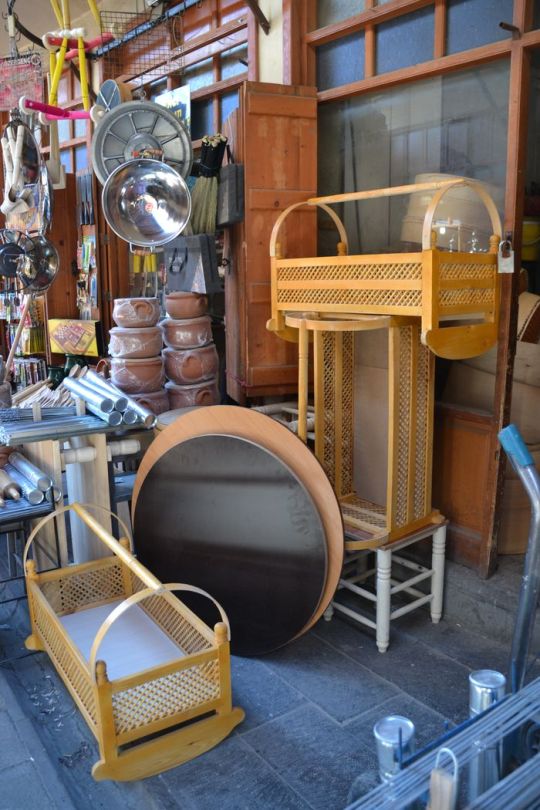
The paint may be overdone
The paint may be overdone; the colours are not always harmonious; the new glass is not equal to the old. But its restoration by the most learned of modern antiquarians enables the unlearned to judge the effect of Gothic architecture in its glory, and to understand the pregnant remark of Mr. Fergusson that Gothic architecture might well be named the painted-glass style of building. To the historian, this Chapel, the domestic oratory of St. Louis, the purest hero of the Middle Ages, the church of the palace of the French kings in their noblest era, the entrancing masterpiece of pointed architecture, must remain as one of the typical buildings in the world.
The mass of buildings, of which the Sainte Chapelle is part, exactly answers to our palace of Westminster; and our palace alone can compare with it as a relic of the Feudal monarchy. The Conciergerie prison, the adjacent hall, and the towers which we see along the Quai de l’Horloge, cor-respond with the remains of the old palace of Westminster, which was finally destroyed when the Houses of Parliament were built. The Sainte Chapelle answers to St. Stephen’s, of which the exquisite crypt alone survived the fire of 1834. Westminster Hall answers to the Salle des Pas Perdus, which took the place of the great Hall of St. Louis private tours istanbul. The Palais de Justice answers to the Law Courts of Westminster which were in use till removed in 1882.
Clock Tower
The Tour de V Horloge exactly repeats our Clock Tower. Now the French palace is in foundation far more ancient than the English; more of its ancient parts remain; and its historical record is longer, and almost more crowded with incident, than our own. The French palace is the successor of the Municipal palace of Roman Lutetia; and traces of this building have been preserved. It was certainly the Parisian palace of Clovis and his dynasty, of Charlemagne and his dynasty, and it was the capital seat of the Counts of Paris, when they became kings of France. It only ceased to be a royal residence in the age of Francis 1. and Henri 11. It was thus for a thousand years the home of the monarchs of the Seine valley. It is significant of French history that, whereas in England Parliament has finally ousted both Monarchy and Justice from the Palace of Westminster and installed itself in the royal abode and even taken its name, in Paris it is Justice and Police which have appropriated the Palace in the island Citt and have long ago ousted both Parliament and Monarchy.
In England we have nothing of the old palace left but the crypt of St. Stephen’s, some cloisters, a few chambers, and the great Hall. In France they have rebuilt their old Hall; but they have their Chapel almost entire. And whereas in Westminster we have the old palace now rebuilt, and absorbed in Barry’s modern perpendicular, in Paris they have still the shell of the old towers and gateway, and some fine work of the age of St. Louis within the Conciergerie building.
There is some noble masonry in what is called the Kitchen of St. Louis, evidently the substructure of his palace, and many other parts of his work within the precincts of the prison. Few prisons have a record more stirring. Here, during the Revolution, all the chief prisoners passed their last hours. We may still see the cell where Marie Antoinette uttered her last prayers, where Robespierre lay in agony, and Danton and Vergniaud thundered out their latest perorations,—and they show you, too, the traditional scene of the mythical last supper of the Girondins, which figures so melodramatically in the famous romance of Lamartine.
0 notes
Photo

The paint may be overdone
The paint may be overdone; the colours are not always harmonious; the new glass is not equal to the old. But its restoration by the most learned of modern antiquarians enables the unlearned to judge the effect of Gothic architecture in its glory, and to understand the pregnant remark of Mr. Fergusson that Gothic architecture might well be named the painted-glass style of building. To the historian, this Chapel, the domestic oratory of St. Louis, the purest hero of the Middle Ages, the church of the palace of the French kings in their noblest era, the entrancing masterpiece of pointed architecture, must remain as one of the typical buildings in the world.
The mass of buildings, of which the Sainte Chapelle is part, exactly answers to our palace of Westminster; and our palace alone can compare with it as a relic of the Feudal monarchy. The Conciergerie prison, the adjacent hall, and the towers which we see along the Quai de l’Horloge, cor-respond with the remains of the old palace of Westminster, which was finally destroyed when the Houses of Parliament were built. The Sainte Chapelle answers to St. Stephen’s, of which the exquisite crypt alone survived the fire of 1834. Westminster Hall answers to the Salle des Pas Perdus, which took the place of the great Hall of St. Louis private tours istanbul. The Palais de Justice answers to the Law Courts of Westminster which were in use till removed in 1882.
Clock Tower
The Tour de V Horloge exactly repeats our Clock Tower. Now the French palace is in foundation far more ancient than the English; more of its ancient parts remain; and its historical record is longer, and almost more crowded with incident, than our own. The French palace is the successor of the Municipal palace of Roman Lutetia; and traces of this building have been preserved. It was certainly the Parisian palace of Clovis and his dynasty, of Charlemagne and his dynasty, and it was the capital seat of the Counts of Paris, when they became kings of France. It only ceased to be a royal residence in the age of Francis 1. and Henri 11. It was thus for a thousand years the home of the monarchs of the Seine valley. It is significant of French history that, whereas in England Parliament has finally ousted both Monarchy and Justice from the Palace of Westminster and installed itself in the royal abode and even taken its name, in Paris it is Justice and Police which have appropriated the Palace in the island Citt and have long ago ousted both Parliament and Monarchy.
In England we have nothing of the old palace left but the crypt of St. Stephen’s, some cloisters, a few chambers, and the great Hall. In France they have rebuilt their old Hall; but they have their Chapel almost entire. And whereas in Westminster we have the old palace now rebuilt, and absorbed in Barry’s modern perpendicular, in Paris they have still the shell of the old towers and gateway, and some fine work of the age of St. Louis within the Conciergerie building.
There is some noble masonry in what is called the Kitchen of St. Louis, evidently the substructure of his palace, and many other parts of his work within the precincts of the prison. Few prisons have a record more stirring. Here, during the Revolution, all the chief prisoners passed their last hours. We may still see the cell where Marie Antoinette uttered her last prayers, where Robespierre lay in agony, and Danton and Vergniaud thundered out their latest perorations,—and they show you, too, the traditional scene of the mythical last supper of the Girondins, which figures so melodramatically in the famous romance of Lamartine.
0 notes
Photo

The paint may be overdone
The paint may be overdone; the colours are not always harmonious; the new glass is not equal to the old. But its restoration by the most learned of modern antiquarians enables the unlearned to judge the effect of Gothic architecture in its glory, and to understand the pregnant remark of Mr. Fergusson that Gothic architecture might well be named the painted-glass style of building. To the historian, this Chapel, the domestic oratory of St. Louis, the purest hero of the Middle Ages, the church of the palace of the French kings in their noblest era, the entrancing masterpiece of pointed architecture, must remain as one of the typical buildings in the world.
The mass of buildings, of which the Sainte Chapelle is part, exactly answers to our palace of Westminster; and our palace alone can compare with it as a relic of the Feudal monarchy. The Conciergerie prison, the adjacent hall, and the towers which we see along the Quai de l’Horloge, cor-respond with the remains of the old palace of Westminster, which was finally destroyed when the Houses of Parliament were built. The Sainte Chapelle answers to St. Stephen’s, of which the exquisite crypt alone survived the fire of 1834. Westminster Hall answers to the Salle des Pas Perdus, which took the place of the great Hall of St. Louis private tours istanbul. The Palais de Justice answers to the Law Courts of Westminster which were in use till removed in 1882.
Clock Tower
The Tour de V Horloge exactly repeats our Clock Tower. Now the French palace is in foundation far more ancient than the English; more of its ancient parts remain; and its historical record is longer, and almost more crowded with incident, than our own. The French palace is the successor of the Municipal palace of Roman Lutetia; and traces of this building have been preserved. It was certainly the Parisian palace of Clovis and his dynasty, of Charlemagne and his dynasty, and it was the capital seat of the Counts of Paris, when they became kings of France. It only ceased to be a royal residence in the age of Francis 1. and Henri 11. It was thus for a thousand years the home of the monarchs of the Seine valley. It is significant of French history that, whereas in England Parliament has finally ousted both Monarchy and Justice from the Palace of Westminster and installed itself in the royal abode and even taken its name, in Paris it is Justice and Police which have appropriated the Palace in the island Citt and have long ago ousted both Parliament and Monarchy.
In England we have nothing of the old palace left but the crypt of St. Stephen’s, some cloisters, a few chambers, and the great Hall. In France they have rebuilt their old Hall; but they have their Chapel almost entire. And whereas in Westminster we have the old palace now rebuilt, and absorbed in Barry’s modern perpendicular, in Paris they have still the shell of the old towers and gateway, and some fine work of the age of St. Louis within the Conciergerie building.
There is some noble masonry in what is called the Kitchen of St. Louis, evidently the substructure of his palace, and many other parts of his work within the precincts of the prison. Few prisons have a record more stirring. Here, during the Revolution, all the chief prisoners passed their last hours. We may still see the cell where Marie Antoinette uttered her last prayers, where Robespierre lay in agony, and Danton and Vergniaud thundered out their latest perorations,—and they show you, too, the traditional scene of the mythical last supper of the Girondins, which figures so melodramatically in the famous romance of Lamartine.
0 notes
Photo
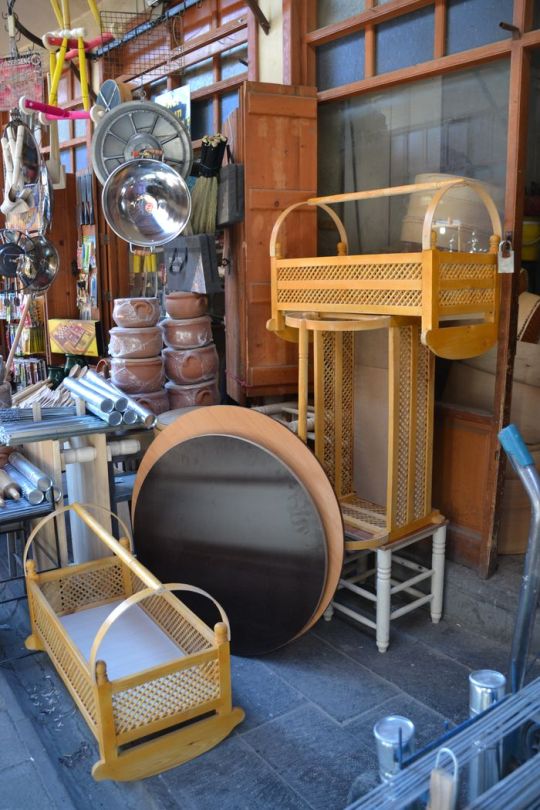
The paint may be overdone
The paint may be overdone; the colours are not always harmonious; the new glass is not equal to the old. But its restoration by the most learned of modern antiquarians enables the unlearned to judge the effect of Gothic architecture in its glory, and to understand the pregnant remark of Mr. Fergusson that Gothic architecture might well be named the painted-glass style of building. To the historian, this Chapel, the domestic oratory of St. Louis, the purest hero of the Middle Ages, the church of the palace of the French kings in their noblest era, the entrancing masterpiece of pointed architecture, must remain as one of the typical buildings in the world.
The mass of buildings, of which the Sainte Chapelle is part, exactly answers to our palace of Westminster; and our palace alone can compare with it as a relic of the Feudal monarchy. The Conciergerie prison, the adjacent hall, and the towers which we see along the Quai de l’Horloge, cor-respond with the remains of the old palace of Westminster, which was finally destroyed when the Houses of Parliament were built. The Sainte Chapelle answers to St. Stephen’s, of which the exquisite crypt alone survived the fire of 1834. Westminster Hall answers to the Salle des Pas Perdus, which took the place of the great Hall of St. Louis private tours istanbul. The Palais de Justice answers to the Law Courts of Westminster which were in use till removed in 1882.
Clock Tower
The Tour de V Horloge exactly repeats our Clock Tower. Now the French palace is in foundation far more ancient than the English; more of its ancient parts remain; and its historical record is longer, and almost more crowded with incident, than our own. The French palace is the successor of the Municipal palace of Roman Lutetia; and traces of this building have been preserved. It was certainly the Parisian palace of Clovis and his dynasty, of Charlemagne and his dynasty, and it was the capital seat of the Counts of Paris, when they became kings of France. It only ceased to be a royal residence in the age of Francis 1. and Henri 11. It was thus for a thousand years the home of the monarchs of the Seine valley. It is significant of French history that, whereas in England Parliament has finally ousted both Monarchy and Justice from the Palace of Westminster and installed itself in the royal abode and even taken its name, in Paris it is Justice and Police which have appropriated the Palace in the island Citt and have long ago ousted both Parliament and Monarchy.
In England we have nothing of the old palace left but the crypt of St. Stephen’s, some cloisters, a few chambers, and the great Hall. In France they have rebuilt their old Hall; but they have their Chapel almost entire. And whereas in Westminster we have the old palace now rebuilt, and absorbed in Barry’s modern perpendicular, in Paris they have still the shell of the old towers and gateway, and some fine work of the age of St. Louis within the Conciergerie building.
There is some noble masonry in what is called the Kitchen of St. Louis, evidently the substructure of his palace, and many other parts of his work within the precincts of the prison. Few prisons have a record more stirring. Here, during the Revolution, all the chief prisoners passed their last hours. We may still see the cell where Marie Antoinette uttered her last prayers, where Robespierre lay in agony, and Danton and Vergniaud thundered out their latest perorations,—and they show you, too, the traditional scene of the mythical last supper of the Girondins, which figures so melodramatically in the famous romance of Lamartine.
0 notes